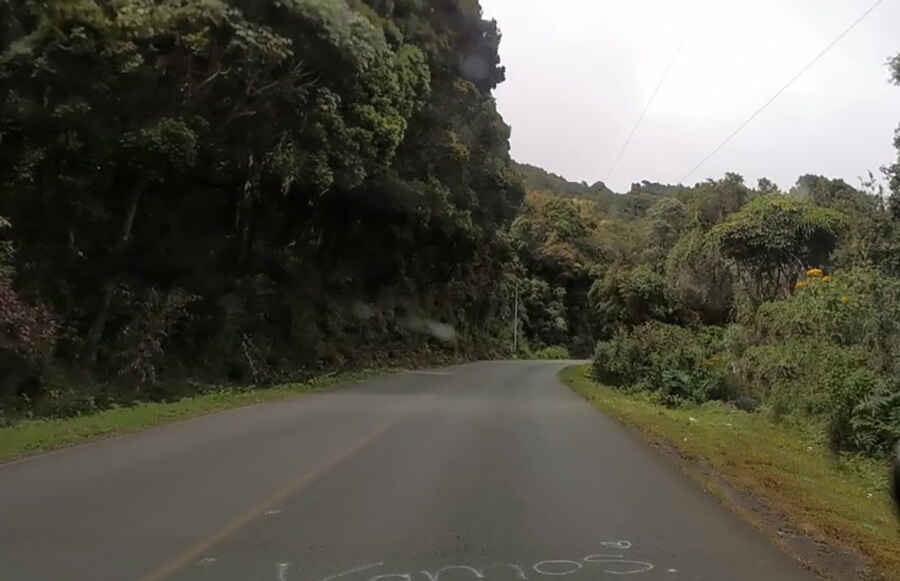Why Are Costa Rica’s Roads So Dangerous?
The sunny country of Costa Rica is a popular destination for tourists from all over the world thanks to its pristine beaches, exotic wildlife, luxury accommodations, and favorable climate. Costa Rica also has a reputation for being one of the safest places to visit, since it is ranked as the most peaceful country within the Caribbean and Central America.

Of course, even with its relatively low crime rates, there are still plenty of unexpected dangers that tourists might run into. It’s important to note that accidents are the third leading cause of death globally, and Costa Rica is not immune to this statistic. Driving in Costa Rica is known to be pretty risky, especially given the nature of some of the country’s most popular routes. As a precaution, when you’re planning your trip to Costa Rica, you should do your research on experienced tour companies to help you safely cross some of the more treacherous roads, or familiarize yourself with the more dangerous routes so you know which areas to avoid. To understand why driving in Costa Rica can be so risky, let’s take a look at the history and hazards of the most dangerous road in the country.
Cerro de la Muerte
As the highest point on the Ruta 2 of thePan-American Highway, Cerro de la Muerte is not only the most dangerous road in Costa Rica but it is considered to be one of the most dangerous roads in the world. Before it was developed into a modern road, it was used by travelers who walked or rode on horses or mules for days at a time from Los Santos to San Jose. With the elevation of the mountain–the highest point reaching almost 11,000 ft above sea level–it was common for travelers to face harsh conditions like heavy rain, billowing winds, and freezing temperatures. There were adobe homes built along the route to help shelter travelers overnight and protect them from these conditions, but many people still succumbed, earning the route its name ‘Cerro de la Muerte,’ which translates to ‘Hill of Death.’ While the freezing temperatures and rain are much easier to deal with now that people are traversing the pass in cars instead of on horseback, there are still many factors that make the route dangerous for travelers. This is what you should look out for if you’re feeling bold enough to take the mountain pass:
The Road’s Unique Features
The section of the Pan-American Highway that runs through Cerro de la Muerte has the highest elevation of the entire route. Here, the road runs precariously along the edges of cliffs, with plenty of crosses along the route to mark the spots of past accidents and remind travelers to drive slowly. Careful driving is especially important around the route’s many narrow and blind turns. Most shockingly, though the road is paved, it is not fully developed and maintained to the standards that tourists might be used to. For example, the route is littered with deep potholes and there are alarmingly no guardrails or barriers along the edges of the roads to protect cars from going over the cliffs. This is why it’s so important to exercise caution on this drive.
Inclement Weather
Costa Rica’s rainy season lasts from May to November. The early months of this season remain relatively dry and still offer plenty of warm, sunny days, making them the perfect time to visit if you’re looking to take advantage of lower travel prices and lighter crowds of tourists. Of course, this rainy season can harm the country’s roads. Areas that are at a lower elevation are prone to flooding, which can completely deconstruct some roadways and cause entire routes to be shut down. However, roads at a higher elevation are not immune to the effects of the rainy season either. In the mountains, heavy rain can cause landslides, which can have devastating effects on the roads and shut certain routes down for months at a time.
Conclusion
If the things that you want to do during your visit to Costa Rica require you to travel on some of its most dangerous roads, then you should be careful about when you plan to visit. While the rainy season can be tempting given the smaller crowds and lower prices, this is when the roads will be most dangerous, or could even be shut down completely. To guarantee that you have a safe trip and get the opportunity to cross off every experience on your list, then you should plan your visit during the drier months. You’ll deal with a lot less unpredictability this way.